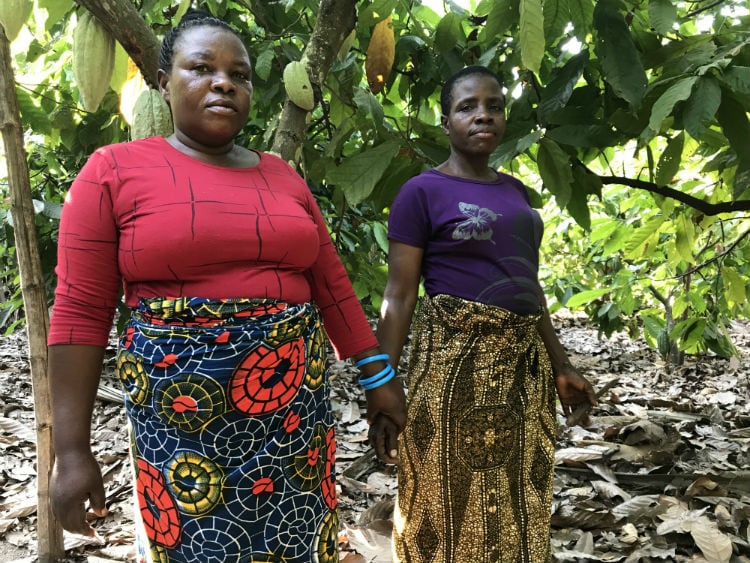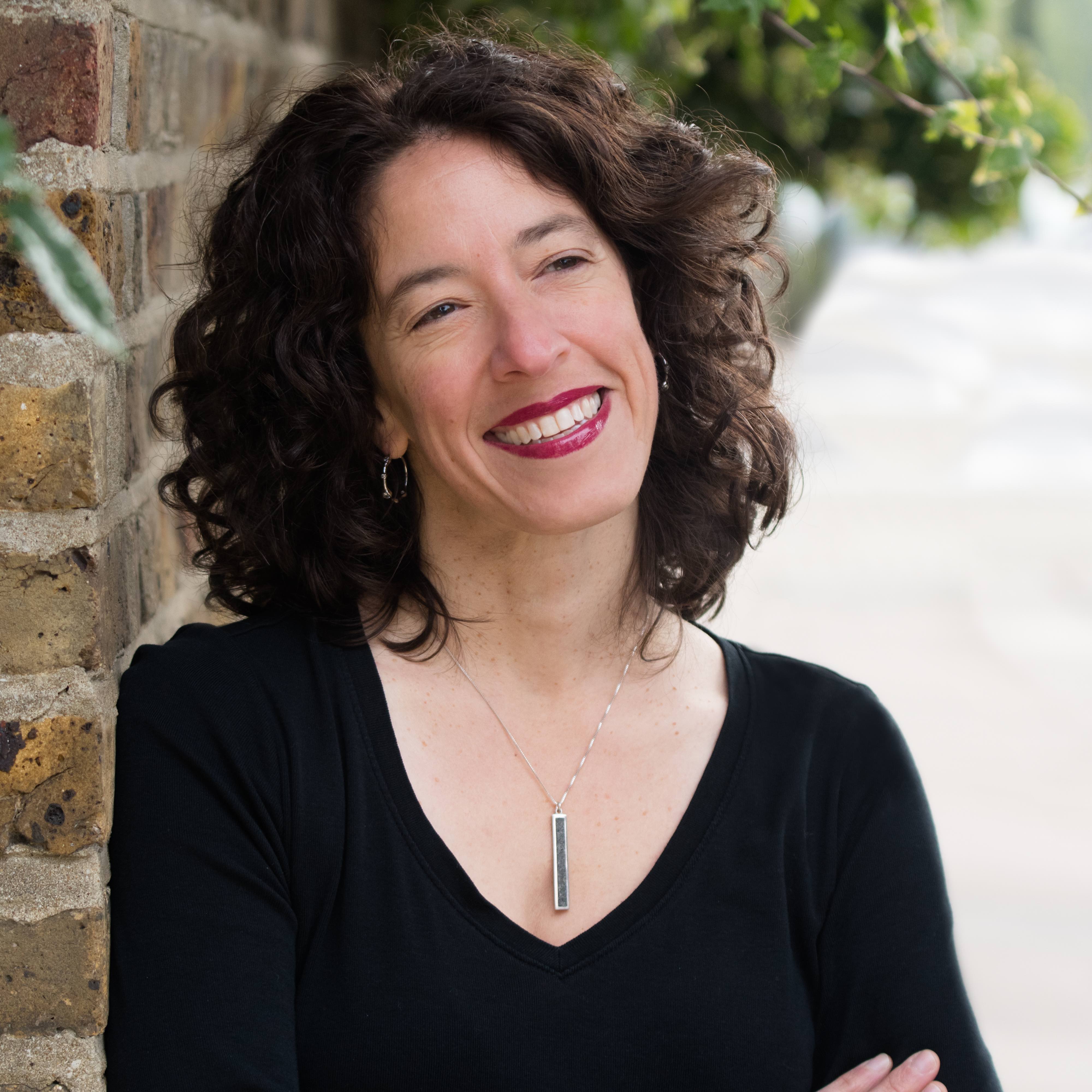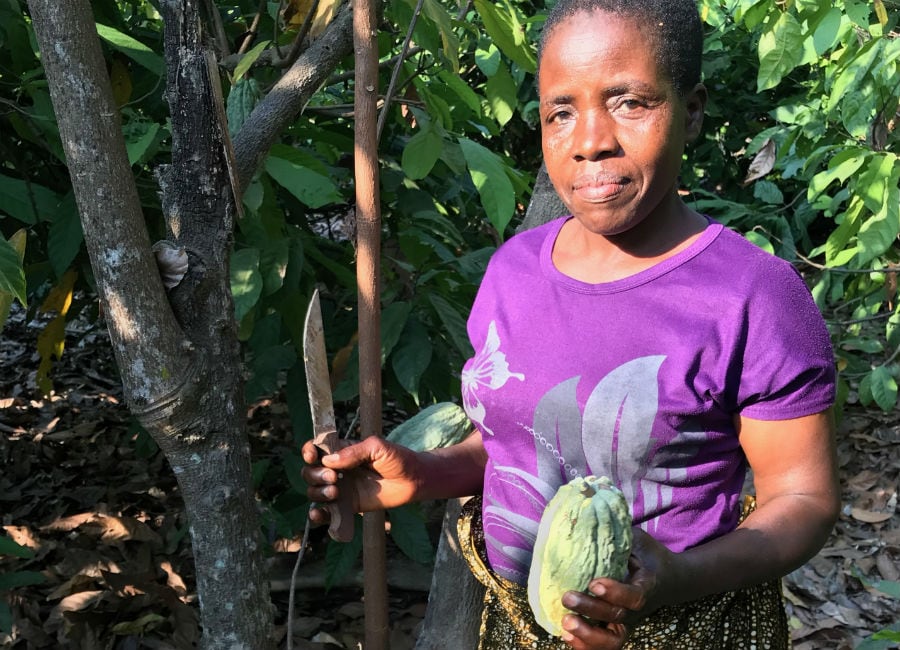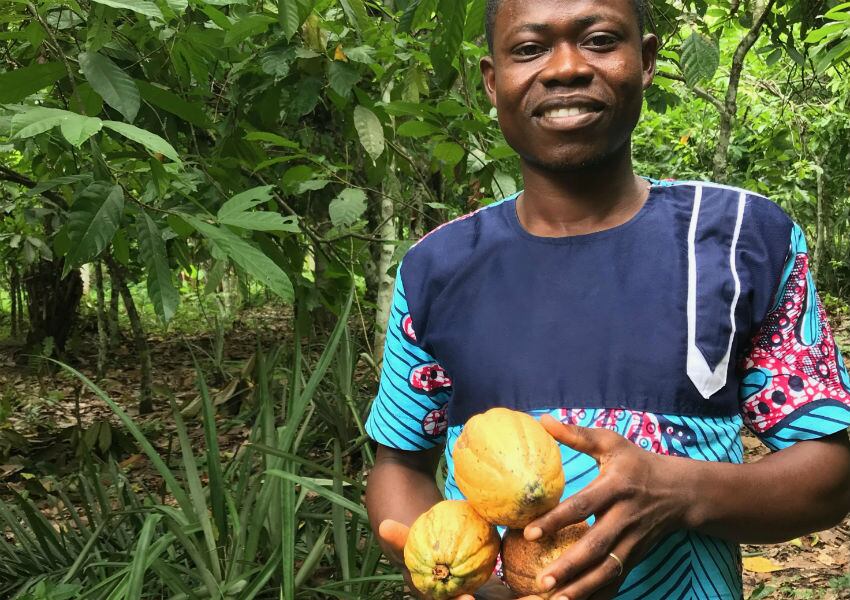Bahati Sanjingu and I sit in the shady yard between her neat brick house and her cocoa trees. I had traveled by motorbike to the village of Songa Mbele, in Tanzania’s Kilombero Valley, to meet Sanjingu at her home, which was pleasingly full of life. Three fat ducks rested together on the cracked earth, and a hen hustled after her peeping chicks. Cookware was piled on a bamboo table beneath the thatched roof of the open-air kitchen. While we talked, Sanjingu’s younger sister, Leah Zawadi, sat nearby on a woven mat, checking her phone, listening to our conversation, and going to check on several children who were playing amongst the cocoa trees.
Sanjingu’s own children are all grown, or nearly so. Her oldest daughter, Neema, farms rice nearby. Rehema, her younger daughter, has a tailoring business in Tanzania’s capital, Dar Es Salaam. And her son, Zefania, the youngest, is training to be a teacher. Sanjingu runs two cash crop farms, manages her herd of four cattle and her fowl, worships at church, and spends time with family and friends.
Smart decisions
She was heartfelt and generous - before I left, she surprised me with a gift of homemade yoghurt - but seemed to take life seriously. It is not difficult to understand her gravitas: Sanjingu has seen a great deal in her 53 years. Her given name, Bahati, means 'luck', but no one I spoke to attributed her success to good fortune. Rather, people talked about her hard work, and her ability to make smart decisions, for herself and her family, even when things seemed grim.
Songa Mbele means 'proceed on' in Swahili. When she’d arrived there, however, nearly 20 years before, Sanjingu had chosen to stay. With her husband and young children, she had come from the Southern Highlands, near to the border with Malawi and Zambia, to settle in the floodplains of the Morogoro Region. Farmland was scarce in their former home, but still plentiful at the time in Morogoro, with good farming prospects for the family. Perhaps they even imagined some version of the tranquil, thriving home where we were sitting. However, soon after they arrived, Sanjingu’s husband passed away, leaving her with an uncertain future.

Sanjingu is from the Nyachusa (also spelled Nyakyusa) ethnic group. While women and men both do farm work among the Nyachusa, only men are considered to have the strength for certain tasks, including for farming rice, a staple food and principal cash crop in the area. Without the ability to earn a good income from rice, it would be very difficult for Sanjingu to support her family.
The government owns all the land in Tanzania, but individuals can acquire a title deed and farm crops of their choice. About a year after she arrived, Sanjingu heard about an available two-acre rice plot, and purchased it for TSh200,000 (approx. US$225 in 2001). The next year, in 2002, she bought a three-acre rice plot. Sanjingu walked an hour each way from her house, every day during the growing season, to work the larger of her two fields.
She became savvy in maximizing her crop’s value. The main rice harvest happens in June and July, after the long rains. Sanjingu kept enough for her family to eat, and sold the rest: about twenty 100-kilogram bags every year. She could have sold the rice immediately, but instead she held onto her harvest until the price rose. This year, at harvest time, the price for one kilogram of threshed rice was TSh800 (US$0.35). When we met in September, it was up to TSh1200 (US$0.52), and would go as high as TSh1600 (US$0.70) or even TSh1700 (US$0.74) in February. By keeping her 2000 kilograms until then, Sanjingu expected to earn TSh3,200,000–3,400,000 (US$1391–1478).
Farming rice, however, did not offer Sanjingu all the security she needed. In 2003, she decided to replace the rice on her smaller plot with cocoa.
“After my husband passed away, in 2000,” Sanjingu said, “I was advised … that if I plant cocoa, my life is going to be better.” In particular, her neighbor Fomen Mwakilima had encouraged her. Cocoa had been good for him, and he thought it would be good for her too. It was difficult, Sanjingu said, to make the transition to growing cocoa on what had been a rice plot, because there were no shade trees, and she needed to acquire materials for fermentation and drying. But in the end, Mwakilima was right: cocoa was good for Sanjingu.
Transitioning from rice
After transitioning the plot from rice, Sanjingu said that farming “cocoa is easy, you don’t need to do a lot to it” - not a sentiment that I have encountered often. But I have mostly researched in West Africa, where the prolific, plant-filled, forest environment makes farming cocoa physically laborious. To me, the climate in Morogoro felt too dry for cocoa, which thrives in tropical humidity. The ground beneath Sanjingu’s trees was covered in a thick bed of crunchy fallen leaves, and the cushions of flowers on the trunks looked limp and thirsty. I wondered how it was possible to grow cocoa in such conditions, until I learned that the area is fed by runoff from the nearby Udzungwa Mountains, and that there is a high water table lying beneath the trees. As Sanjingu told me, this meant that you can grow cocoa “even if you are not strong.”
“For planting rice,” she explained, “it’s when you are very strong.” Rice fields are kept wet, so weeding them takes a lot of hard work. “But if … you are not strong enough to operate a rice field, the cocoa can do.” The region’s dry climate meant that the laborious work of weeding cocoa was only necessary during the rainy season.
I prefer to be called a cocoa farmer, because the cocoa plants are always there, at my field, and I am harvesting throughout the year
“So, cocoa is a good thing here?” I asked. “Sana! Sana,” Sanjingu replied, meaning yes—cocoa is very good.
Still, she devoted her larger plot to rice, and rice made her more money than cocoa. I asked if she thought of herself as a rice farmer.
“Call me a cocoa farmer,” she replied. “I prefer to be called a cocoa farmer, because the cocoa plants are always there, at my field, and I am harvesting throughout the year.”
Cocoa had been in the area for as long as anyone could remember, but in recent years, two organizations had introduced fresh energy around the crop. In the mid-2000s, the Mbingu Organic Cocoa Out-growers Association (MOCOA) encouraged the use of organic methods and distributed seeds. Sanjingu preferred to farm organically. “It’s simple,” she said, “and I’m not using these toxic chemicals, so they don’t harm me.”
In 2013, the buying company Kokoa Kamili set up just a short motorbike away from Sanjingu’s farm. Unlike most buyers, who purchased dry beans, Kokoa Kamili wanted wet cocoa. As the company’s founders, Simran Bindra and Brian LoBue, both commented while I was there, farmers were wary at first of selling wet beans. However, women tended to recognize the labor advantages faster than men, and started selling to the company sooner.
“As far as Kokoa Kamili taking wet cocoa,” Sanjingu said, “it reduced the balance of work, of fermenting and drying the cocoa, and any other processing.”
Kokoa Kamili also increased transparency in the buying process by posting the wet bean price on its front gate: TSh1500 (US$0.65) per kilogram, in September 2019. “There is a good profit, selling to Kokoa Kamili,” Sanjingu said.
Financial success
Indeed, Sanjingu has made a financial success of her cocoa. For two consecutive years, she was among the highest selling farmers to Kokoa Kamili. In 2015, she sold 1,888 kilograms of wet beans, for which she earned TSh2,211,000 (US$961). In 2016, she sold 2,079 kilograms, earning TSh3,063,350 (US$1332). Both years, Sanjingu’s sales were celebrated at a season-end dinner with the company’s founders and staff. Her main expense for cocoa is hiring a laborer to weed, which she does twice during the rainy season, at TSh50,000 (US$22) per acre, for a total of TSh200,000 (US$87).
This season, Sanjingu has been delivering 40–60 kilograms twice a month to Kokoa Kamili, earning her TSh60,000–90,000 (US$26–39) each time. It’s less than she has produced in the past, but climate change has meant that Tanzania’s rainy season has been in flux. For several years, the changes seem to have been leading to lower cocoa volumes. Sanjingu maintained hope, however, that cocoa would continue to bring her income almost year-round. Once the main harvest finishes in late December or early in the new year, she predicted that she would still sell up to 30 kilograms of wet beans every other week (earning TSh45,000, or US$20), except in April and May, when the trees don’t produce much at all.
She’s always working on her fields”— She’s always managing her life better
When I asked what is good about being a cocoa farmer, Sanjingu talked about her relationship with Kokoa Kamili. One advantage of working with them was the possibility for short term loans. It’s not common practice, but the company does extend loans under certain circumstances. Sanjingu has received three: TSh200,000 (US$87) in 2015, TSh500,000 (US$217) in 2016, and TSh400,000 (US$174) in 2017. Another is that the buying officer comes to her farm to collect cocoa, so she does not have to transport it. Finally, she said, “They are visiting me and telling me how to grow this crop. They are my friends!”
One such friend is Kokoa Kamili’s Field Officer, Elisante Mntambwe, who describes himself as a link between the company and farmers. Mntambwe attributed Sanjingu’s success not only to her continual labor - “She’s always working on her fields”- but also to her business savvy. “She’s always managing her life better,” he said.
Strong relationship
Mntambwe spoke too about Sanjingu’s ability to connect with people. Other farmers - men, presumably - had the physical strength to “do better than her” at growing cocoa. But by being kind, and polite, and knowledgeable about cocoa farming, Sanjingu knew how to get the best work from her hired laborers, and maintain a strong relationship with Kokoa Kamili.
Sanjingu loves chocolate, though she had only tasted it a few times at Kokoa Kamili events. I had brought cocoa nib brittle, as well as dark and milk bars, from Ghana. Sanjingu thought the brittle had the same flavor as her cocoa, which she liked, but her favorite was the dark chocolate. It was softer than the brittle, she said, but didn’t taste as sugary as the milk chocolate.
After we tasted the chocolate, I asked if Sanjingu wanted to ask me anything, or share something more about herself. Often, when I ask this, farmers talk about the difficulty of their work, or describe assistance they need. Sanjingu only wanted to know more about how farmers in Ghana grow cocoa, and particularly if they have to irrigate. Then she said, “I do want to know: What benefit do you get from interviewing me?”
I found this surprisingly difficult to answer. How to explain that learning about her life and work as a cocoa farmer is a benefit? I said that I felt it was important for people who love chocolate—like me - to know where cocoa comes from, and that they get to know Sanjingu herself, in a way. She looked at me and said, “Asante sana” - “Thank you, very much.”
- Author's note: Unless otherwise noted, currency conversions were current as of November 2019. During our interview, I asked questions in English and Bahati Sanjingu replied in Swahili. My thanks to Elisante Mntambwe for translating.
- Other articles in this series: 'You, the whites, are eating cocoa. You bring the price … you have to give us a chance to sell it at the price that we want’

Dr Kristy Leissle is a scholar of cocoa and chocolate. Since 2004, her work has investigated the politics, economics, and cultures of these industries, focusing on West African political economy and trade, the US craft market, and the complex meanings produced and consumed through chocolate marketing and advertising. Her recent book, Cocoa (Cambridge: Polity, 2018) explores cocoa geopolitics and personal politics, and was #3 on Food Tank’s 2018 Fall Reading List.


